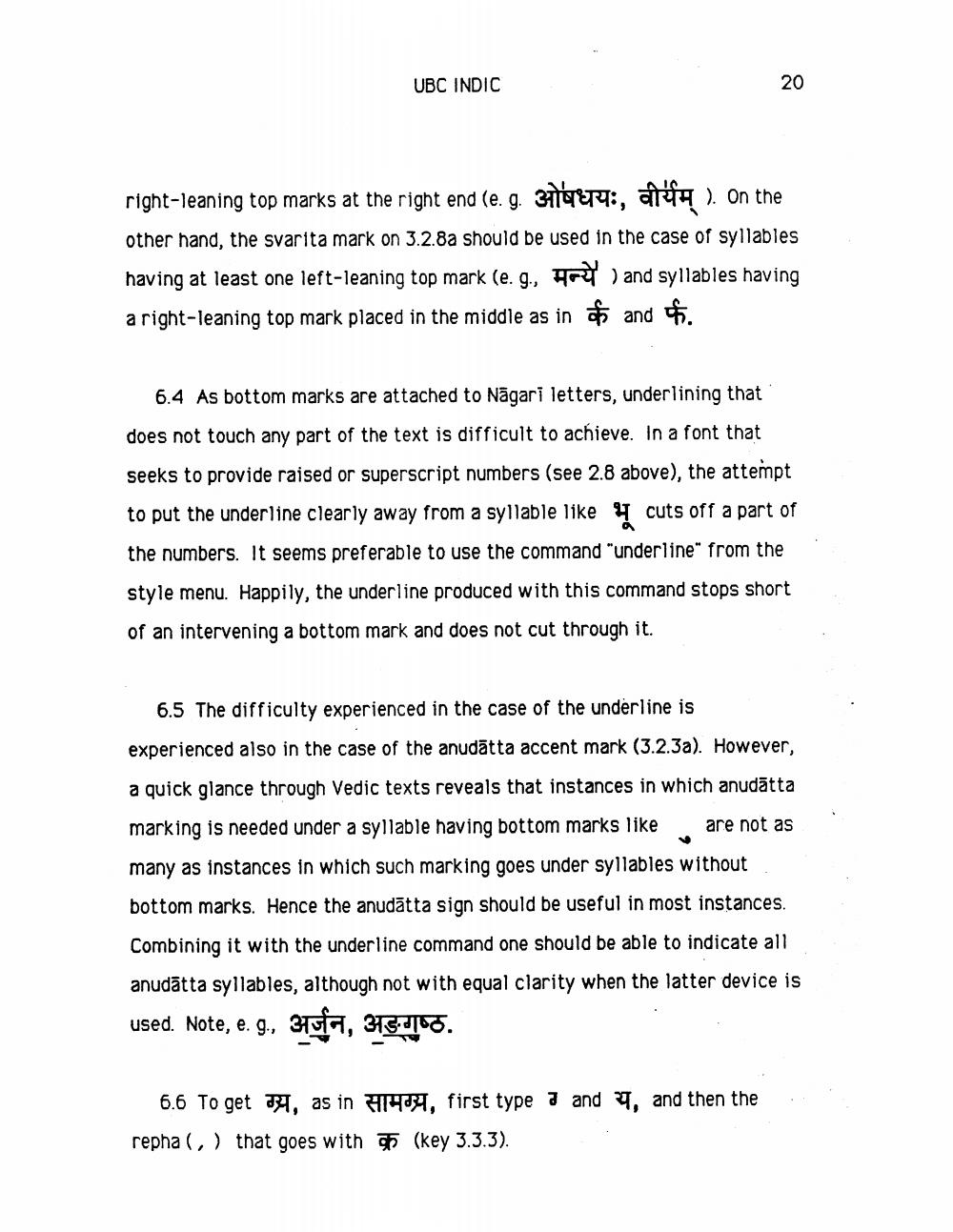________________
UBC INDIC
20
right-leaning top marks at the right end (e. g. 3119679, 144 ). On the other hand, the svarita mark on 3.2.8a should be used in the case of syllables having at least one left-leaning top mark (e. g., Hout ) and syllables having a right-leaning top mark placed in the middle as in oo and .
6.4 As bottom marks are attached to Nāgari letters, underlining that does not touch any part of the text is difficult to achieve. In a font that seeks to provide raised or superscript numbers (see 2.8 above), the attempt to put the underline clearly away from a syllable like y cuts off a part of the numbers. It seems preferable to use the command "underline" from the style menu. Happily, the underline produced with this command stops short of an intervening a bottom mark and does not cut through it.
6.5 The difficulty experienced in the case of the underline is experienced also in the case of the anudātta accent mark (3.2.3a). However, a quick glance through Vedic texts reveals that instances in which anudātta
marking is needed under a syllable having bottom marks like
are not as
many as instances in which such marking goes under syllables without
bottom marks. Hence the anudātta sign should be useful in most instances.
Combining it with the underline command one should be able to indicate all anudātta syllables, although not with equal clarity when the latter device is used. Note, e. 9, 371, 375.41 08.
6.6 To get 34, as in 714034, first type 7 and 7, and then the repha(, ) that goes with n (key 3.3.3).




